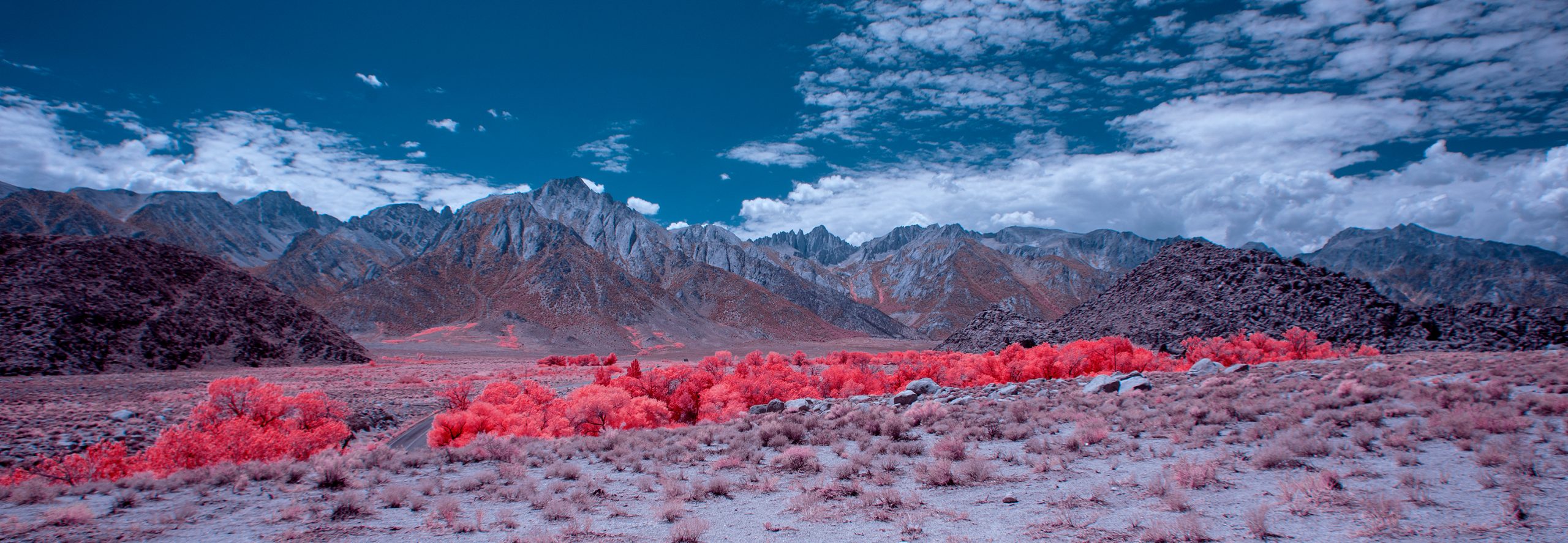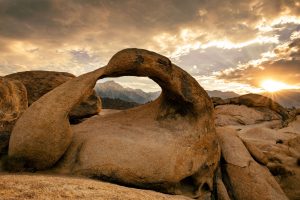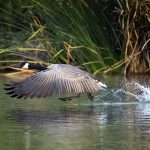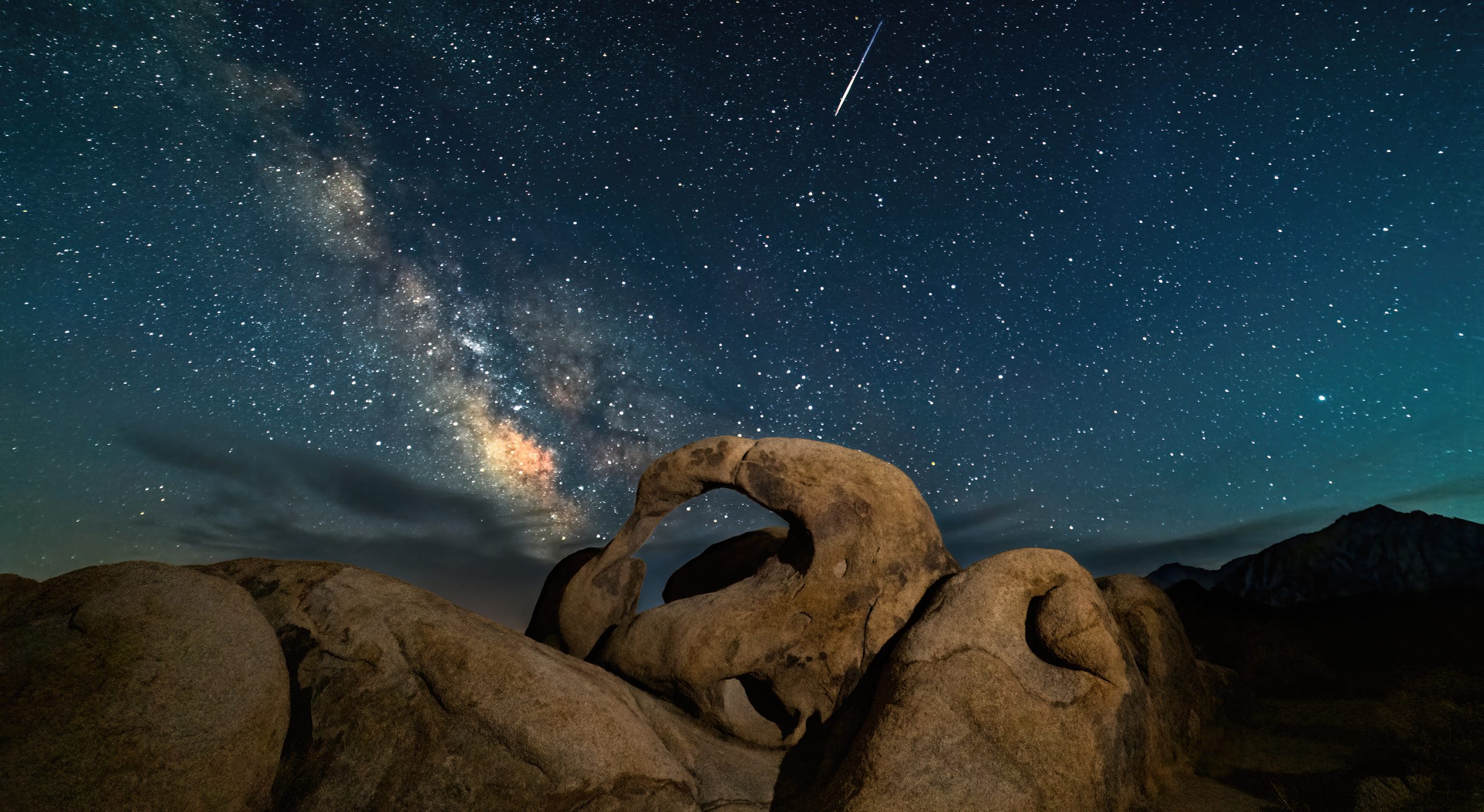Under Open Skies
Home from my latest trip, which did not go exactly as planned but was still a good adventure!
Spent a few days in Owens Valley, field testing some new gear and stress testing some old.
This was the first big outing for the infrared-converted camera and it was fun to see how it performed. Shooting infrared in the desert gives fascinating insight into the local plantlife. In some cases, it shows up dramatically. Below, you can see the vividly bright trees along Lone Pine Creek in the Alabama Hills. The lush, green vegetation fairly glows with infrared light. However, the creosote and dry desert scrub surrounding the creek shows up in far more muted tones. It seems that plants with less active chloroplasts reflect less infrared light, which creates stark contrasts like these.

It made for a whole new way of thinking about photography and how to build a composition. You have to look beyond the visible spectrum and think about the balance of chloroplast-heavy plants with the surrounding scene.
Needless to say, I’m looking forward to taking this rig out to other areas to see what sort of light it can capture.
But it wasn’t all infrared this weekend!
Not only was it a new moon, but it was also the start of the Delta Aquariids meteor shower. With that in mind, I set off with my star tracker and D850 to capture the night sky. Unfortunately, the star tracker–which had not been fired up since last year due to my puppy-induced hiatus–gave me nothing but trouble. On my first night out with it, technical difficulties spoiled the whole attempt and I left empty handed. This was incredibly frustrating, as I had driven quite a long ways up into the White Mountains to shoot at the Patriarch Grove in the Ancient Bristlecone Pine Forest. But (if you’ll forgive the pun) the stars just didn’t align for me on that excursion.
The next night out, closer to my basecamp in Lone Pine, the star tracker seemed to set up fine. Unfortunately, it then turned out that–despite being aligned and set up correctly–it was not tracking at all–which I did not notice until I got the photos onto the laptop at the hotel to start stacking.
Nevertheless, I had been shooting at a shutter speed within the acceptable range for reducing star blur. And while the shoot did not turn out exactly how I hoped, I was able to get enough frames to do a decent stack (pictured in this blog entry header). Needless to say, I’ll be doing some troubleshooting and extensive testing on the tracker before I take it into the field again.

Despite that frustration, I did end up with a lovely sunset shot at Mobius Arch. Alabama Hills is one of my favorite places in California and it’s always a joy to visit.
The Nikkor 20mm f/1.8G has become one of my favorite landscape lenses and it’s not hard to see why. The fantastic sharpness, the lack of flaring, and the positively glorious sunstars it throws have made this one a must-have lens on any trip.
This was also the first trip out with the Rokinon 14mm f/2.8 lens which I recently picked up for landscape astrophotography. I was very impressed with how sharp this lens is, especially for a third party lens. It performed very well and is definitely a good choice for astro work.
I also shot a few rolls of film through my Nikon FM, but more on that later!
Next booked trip is Hawai’i in October, to shoot native birds and volcanoes. But I’m hoping to make another Owens Valley trip before the summer is over. I want to take another shot at getting Milky Way shots in the Ancient Bristlecone Pine Forest, especially since my attempt this time failed. Those trees have been there for 1500 years, so there’s no rush.
Until then, I’ll strive to have the patience of a bristlecone pine.
 Previous post
Beyond the Visible
Previous post
Beyond the Visible
 Next post
Bird Paradise in the City
Next post
Bird Paradise in the City
